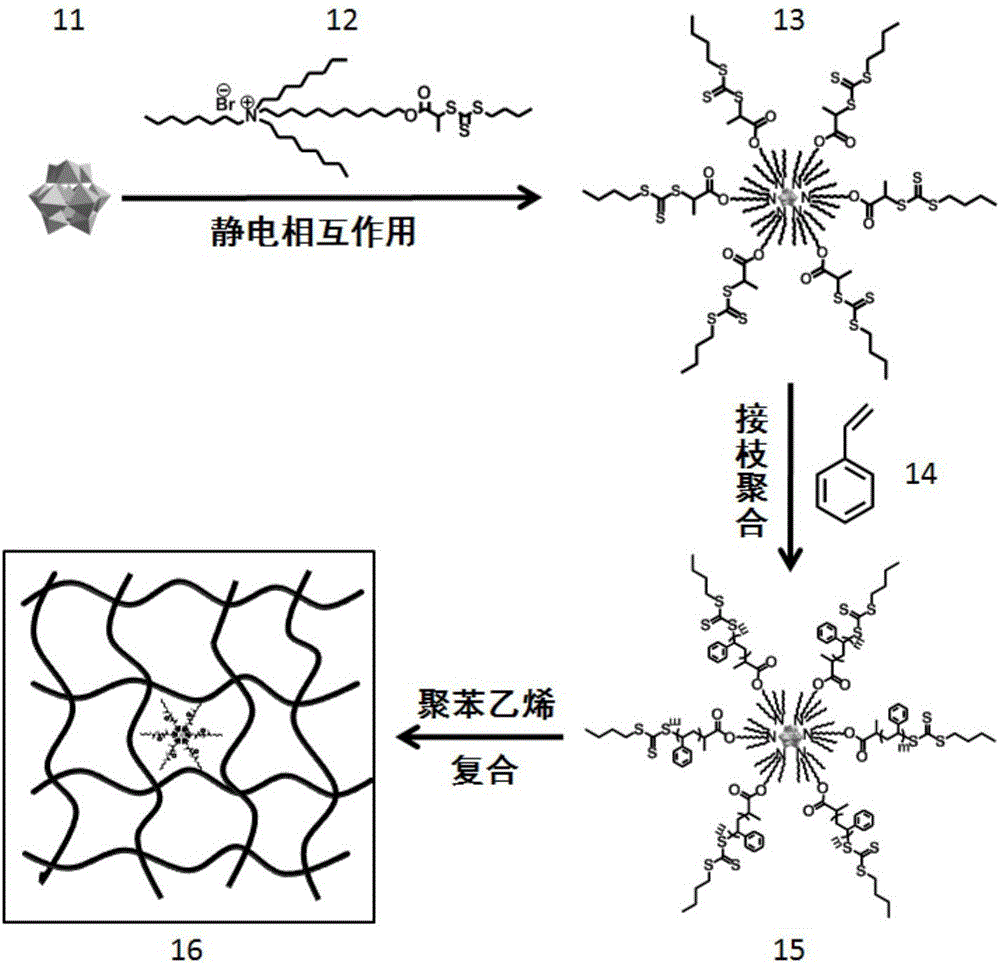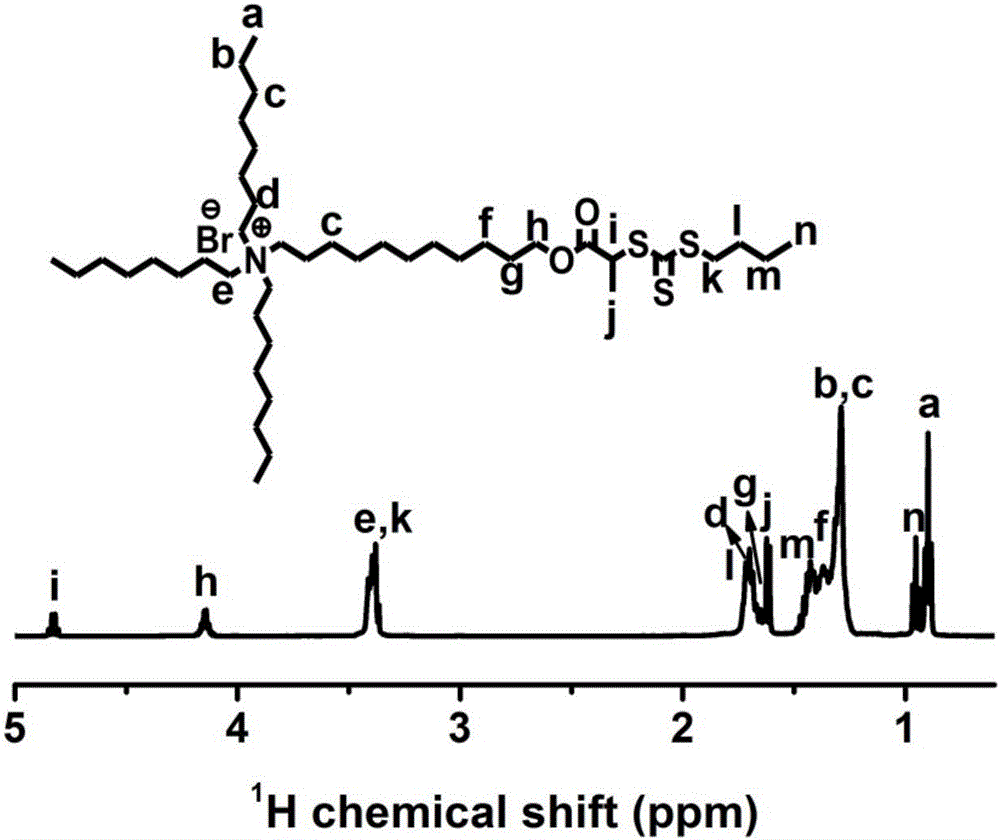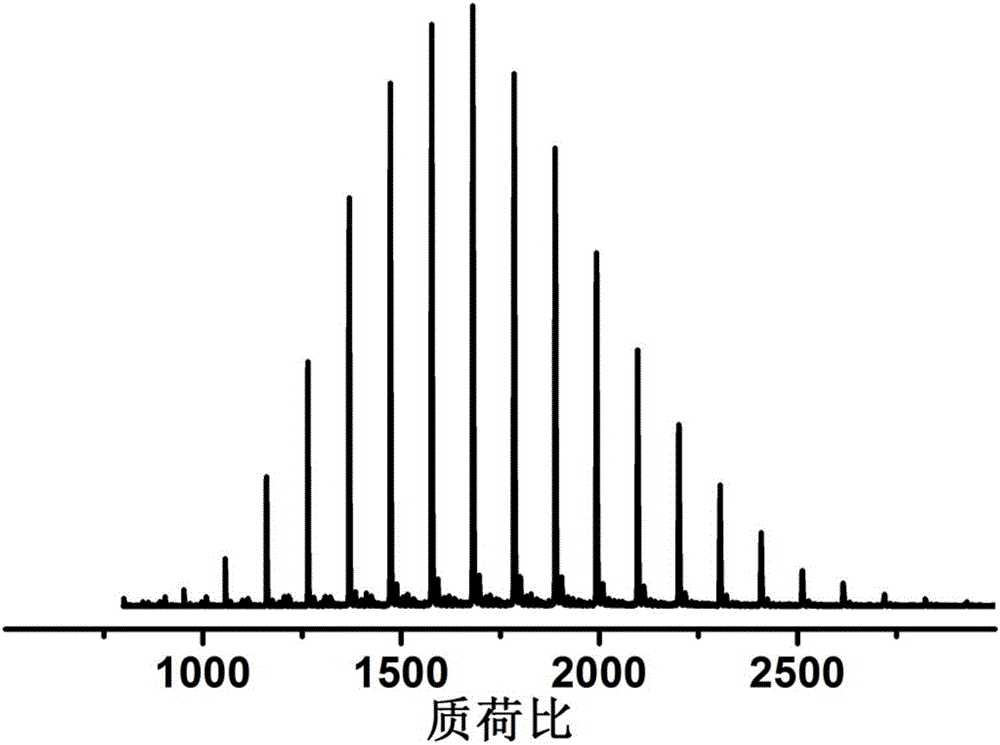Method for reducing viscosity of polystyrene melt
A technology of polystyrene, viscosity, applied in the field of chemical industry and materials
- Summary
- Abstract
- Description
- Claims
- Application Information
AI Technical Summary
Problems solved by technology
Method used
Image
Examples
preparation example Construction
[0042] 1. Preparation of Cationic Chain Transfer Reagent
[0043] Principle: Through the esterification reaction, the trithiocarbonate group is covalently linked to the hydroxyhaloalkane, and then the cationic chain transfer reagent is prepared through the quaternization of the halogenated group.
Embodiment 1
[0044] Example 1: Preparation of 11-(2-(n-butyl trithiocarbonate) propionic acid)-N,N,N-trioctylundecane-11 ester-1-ammonium bromide (BPOA)
[0045] Take 4.5g of n-butanethiol and 5.6g of triethylamine and dissolve in 100mL of dichloromethane, under the protection condition of ice-water bath and nitrogen, add 20mL of dichloromethane solution with 4.2g of carbon disulfide to the above mixed solution dropwise After continuing to stir for 20 min, add 20 mL of dichloromethane solution containing 8.4 g of 2-bromopropionic acid dropwise to the above reaction solution. After the dropwise addition, remove the ice-water bath, return to room temperature, and continue stirring for 3 h ; Stop the reaction, remove the solvent by rotary evaporation to obtain the crude product; dissolve the crude product in 100mL of n-pentane, acidify it with 10% hydrochloric acid with a mass fraction of 180mL, and divide it into three times; then wash away excess Hydrochloric acid until the pH value is neut...
Embodiment 2-1
[0050] Example 2-1: K 6 CoW 12 o 40 Preparation of complexes with cationic chain transfer reagents
[0051] Take the K of 0.14g of polymetallic oxygen cluster 6 CoW 12 o 40 Dissolve in 70mL of water, take 0.2g of cationic chain transfer reagent BPOA and dissolve in 70mL of chloroform, the molar ratio of cationic chain transfer reagent to polymetallic oxygen clusters is 5.5:1; under the condition of vigorous stirring, the surface active The chloroform solution of the agent was added dropwise to the aqueous solution of polymetallic oxygen clusters. After the dropwise addition was complete, continue to stir vigorously for 1 hour; A sample of the organic phase, the solvent chloroform can be removed by rotary evaporation to obtain pure K 6 CoW 12 o 40 In complex with cationic chain transfer reagents. The product mass was 0.3 g.
[0052] 3. Preparation of star polymer
[0053] Principle: The trithiocarbonate group on the periphery of the polymetallic oxygen cluster comple...
PUM
| Property | Measurement | Unit |
|---|---|---|
| pore size | aaaaa | aaaaa |
| degree of polymerization | aaaaa | aaaaa |
| degree of polymerization | aaaaa | aaaaa |
Abstract
Description
Claims
Application Information
 Login to View More
Login to View More - R&D
- Intellectual Property
- Life Sciences
- Materials
- Tech Scout
- Unparalleled Data Quality
- Higher Quality Content
- 60% Fewer Hallucinations
Browse by: Latest US Patents, China's latest patents, Technical Efficacy Thesaurus, Application Domain, Technology Topic, Popular Technical Reports.
© 2025 PatSnap. All rights reserved.Legal|Privacy policy|Modern Slavery Act Transparency Statement|Sitemap|About US| Contact US: help@patsnap.com



